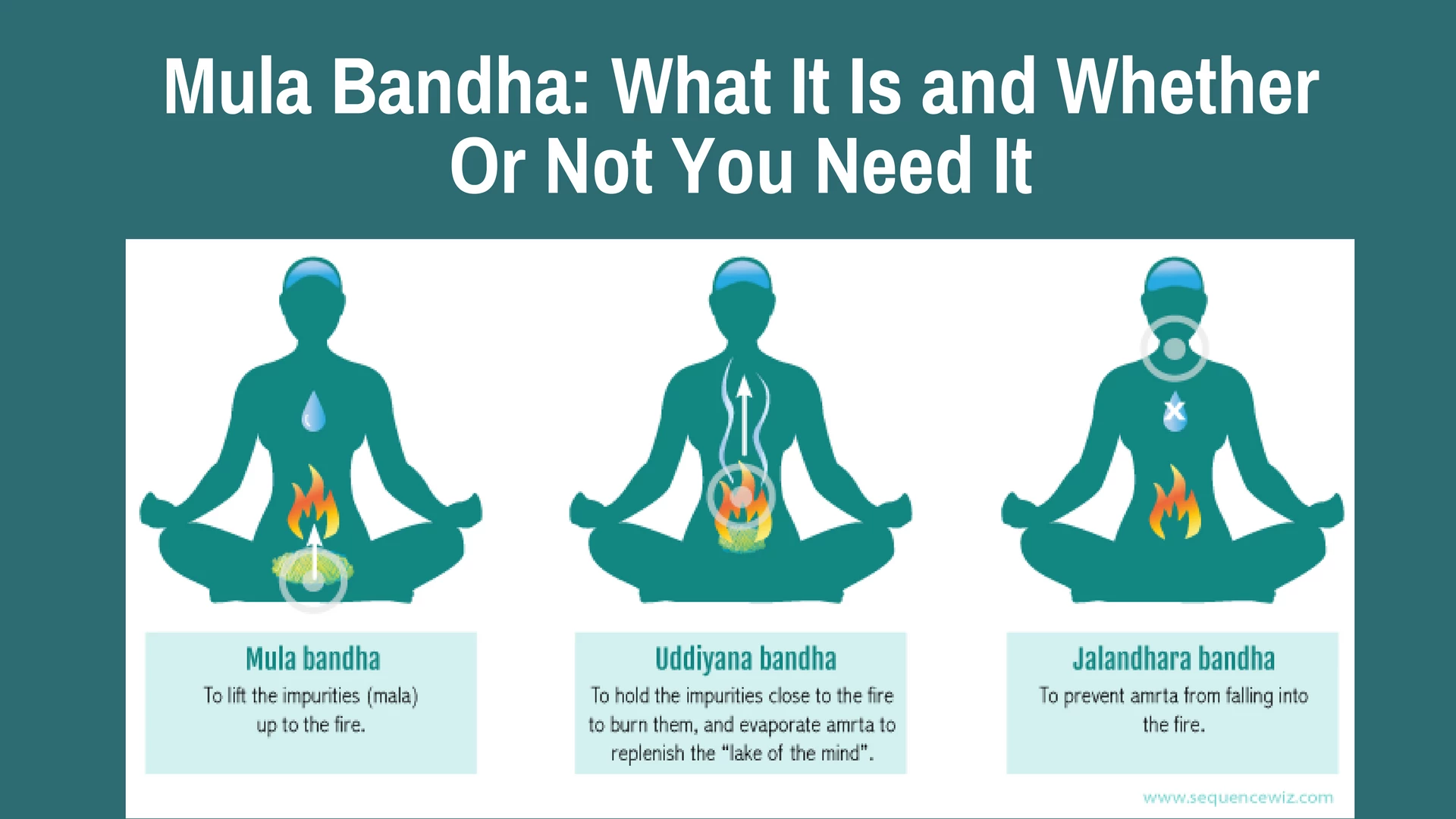Enlivening the Body’s Subtle Energy with Mula Bandha

Some Sanskrit words have successfully made it into our pop culture. One of the terms that seem to be thrown around a lot is mula bandha. You’ll hear a teacher instruct you to “engage your mula bandha” in various poses, while what she really means is “contract your pelvic floor muscles.” Is there a difference? According to Sri Krishnamacharya, there is.
Traditionally bandhas were considered powerfully advanced practices that were practiced for the purpose of affecting your body’s subtle energy, not for creating structural support.
The Classic Approach to the Bandhas
 Yogis say that when we are born there is the nectar of life (amrta) contained in the “lake of the mind” located in the head. In the newborn it’s full. If
Yogis say that when we are born there is the nectar of life (amrta) contained in the “lake of the mind” located in the head. In the newborn it’s full. If  you look in the eyes of a young child, you will see that glow. At puberty, a large quantity of this essence moves down to the region of genitals, and we become fertile. The rest of amrta drips down slowly being consumed in the fire in the navel region. Once all of the nectar is gone, the life ends.
you look in the eyes of a young child, you will see that glow. At puberty, a large quantity of this essence moves down to the region of genitals, and we become fertile. The rest of amrta drips down slowly being consumed in the fire in the navel region. Once all of the nectar is gone, the life ends.
Below the fire is the place where impurities accumulate over time. Those impurities clog our systems and prevent prana from entering the central channel (sushumna nadi). So it is advisable to clear out those impurities. How do we do that? We lift them up using mula bandha (contraction of the pelvic floor muscles), and then we hold them close to the fire by engaging uddiyana bandha (abdominal contraction and lift). As a result, the impurities are reduced to ashes, amrta evaporates from them and rises up to replenish the lake of the mind; and you engage jalandhara bandha (lowering the chin) to preserve that essence, preventing it from dripping down.

So there is logic to it. You would need to practice all three bandhas at the same time, engaging them in a certain order and giving them your undivided attention. That’s why they were done in a seated position. When done properly, bandhas are very powerful, they cause an unmistakable energetic shift. To do it effectively you need proper guidance and some experience with breath control, since the practice of uddiyana bandha, for example, involves holding your breath out for at least 10 seconds.
Traditionally, it is only called a “bandha” if it is practiced in a seated position with a purpose of energy management. If you do it in Virabhadrasana II (Warrior II) or another asana, it is not technically a mula bandha, but “bandha-like” movement or simply pelvic floor contraction.
For some, the distinction might not be important, but it is a significant one. If you try to do mula bandha in Warrior II, you will not get the same effect, and clearly, you will be doing it for a different reason. Is there a benefit in engaging your pelvic floor muscles separately from all the esoteric ideas? Absolutely! But, as always, there is a time and place for that. It is not necessary or even advisable to do it in every single pose. Keep in mind that some folks have chronically contracted pelvic floor muscles and the instruction to “engage the mula bandha” will make them clench those even more.
Traditional Bandha Technique
- Inhale: Lengthen up through the spine.
- Hold the breath: Displace the head slightly backward and lower the chin (jalandhara bandha).
- Exhale: Gradually pull the abdomen in from the pubic bone to the sternum.
- Hold the breath: Keep pulling the belly in and up (uddiyana bandha).
- While still holding the breath out: Engage and lift the pelvic floor muscles and maintain this contraction for the duration of the practice (mula bandha).
- On the next inhalation release jalandhara bandha and uddiyana bandha and then continue with the same cycle as above. Repeat for at least 12 cycles.
As you can see, it’s not so easy. You shouldn’t just plop down on the floor and start experimenting with it. You need adequate preparation before you can begin bandha practice, both over time and within a single session. Also, it’s important to learn this from an experienced teacher, rather than launching into it on your own. Traditionally, you would work toward a classic 10:10:10:10 breath ratio before you could begin the bandha work (which means being able to inhale for 10 seconds, hold 10 seconds, exhale for 10 seconds, hold 10 seconds and maintain that ratio for 12 breaths comfortably).
When yogic concepts make it into our everyday life, many of them become diluted, and I guess that’s inevitable. But if we want to retain the power and potency of this great tradition, we need to remember where those ideas came from and what they were meant to accomplish.
If avoiding injuries and correct alignment is important to your practice – Study with Olga Kabel and YogaUOnline – Avoiding Yoga Injuries: Common Alignment Mistakes with Backbends and Lateral Bends.
Also, read...
Teaching Svadhyaya: 3 Ways to Encourage Self-Study in Yoga
In Celebration of Gray-Haired Yoga – Busting the Myth of the Yoga Body
Related courses

Educated as a school teacher, Olga Kabel has been teaching yoga for over 14 years. She completed multiple Yoga Teacher Training Programs but discovered the strongest connection to the Krishnamacharya/ T.K.V. Desikachar lineage. She had studied with Gary Kraftsow and American Viniyoga Institute (2004-2006) and received her Viniyoga Teacher diploma in July 2006, becoming an AVI-certified Yoga Therapist in April 2011. Olga is a founder and managing director of Sequence Wiz— a web-based yoga sequence builder that assists yoga teachers and yoga therapists in creating and organizing yoga practices. It also features simple, informational articles on how to sequence yoga practices for maximum effectiveness. Olga strongly believes in the healing power of this ancient discipline on every level: physical, psychological, and spiritual. She strives to make yoga practices accessible to students of any age, physical ability, and medical history, specializing in helping her students relieve muscle aches and pains, manage stress and anxiety, and develop mental focus.




